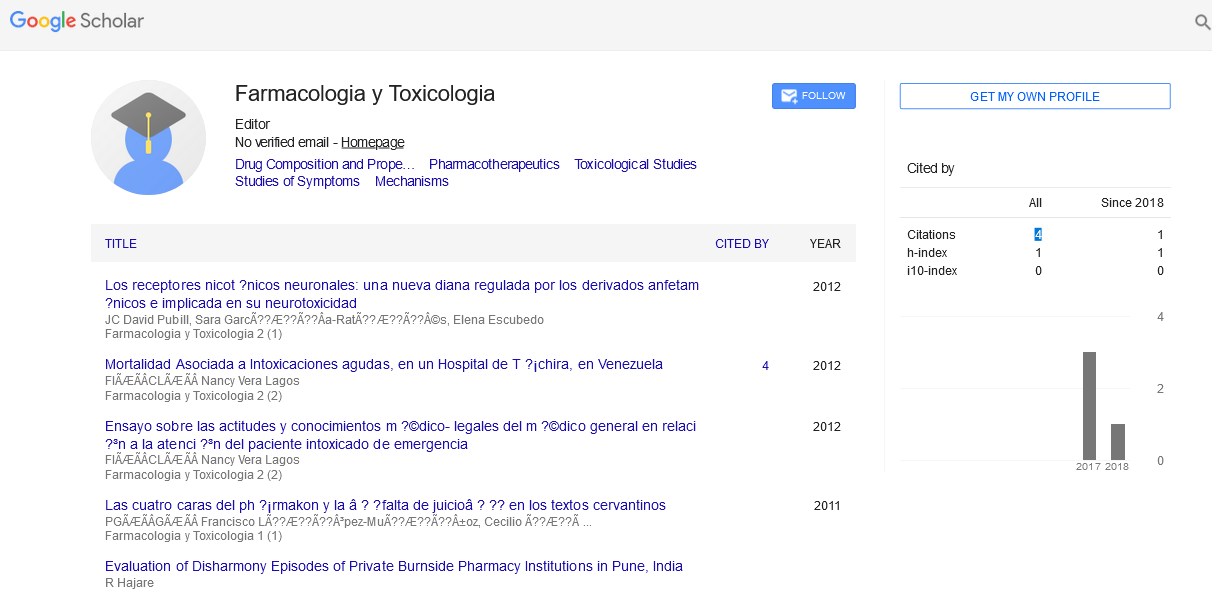Perspective - (2024) Volume 14, Issue 5
Pharmacodynamics: Understanding How Drugs Affect the Body
Annelies Boone*
Department of Pharmacodynamics, University of Adria, Klagenfurt, Austria
*Correspondence:
Annelies Boone, Department of Pharmacodynamics, University of Adria, Klagenfurt,
Austria,
Email:
Received: 07-Aug-2024, Manuscript No. IPFT-24-15126;
Editor assigned: 12-Aug-2024, Pre QC No. IPFT-24-15126 (PQ);
Reviewed: 26-Aug-2024, QC No. IPFT-24-15126;
Revised: 01-Oct-2024, Manuscript No. IPFT-24-15126 (R);
Published:
29-Oct-2024
Introduction
Pharmacodynamics, a core branch of pharmacology, explores
the intricate relationship between drugs and the body. It delves
into the mechanisms through which drugs exert their effects,
their interactions with various biological systems and the
resulting physiological and biochemical changes. This field is
essential for the development of effective and safe medications
and provides a foundation for understanding therapeutic
efficacy and potential side effects.
Description
The essence of pharmacodynamics
At its core, pharmacodynamics focuses on the effects of drugs
on the body and involves several key concepts, including drugreceptor
interactions, dose-response relationships, and
therapeutic versus toxic effects. By studying these aspects,
researchers and healthcare professionals can better understand
how drugs work, how to optimize their use and how to minimize
adverse effects.
Drug-receptor interactions
A central theme in pharmacodynamics is the interaction
between drugs and their targets, primarily receptors. Receptors
are specific protein molecules located on the surface of cells or
within cells that bind to drugs or endogenous substances (like
hormones). When a drug binds to its receptor, it triggers a series
of biochemical events that lead to a physiological response.
There are various types of receptors, including:
G-Protein Coupled Receptors (GPCRs): These are involved in
many physiological processes and are targets for a significant
number of drugs. When a drug binds to a GPCR, it activates
intracellular signaling pathways through G-proteins.
Ion channel receptors: These receptors form channels in the
cell membrane that allow ions to pass through. Drugs affecting
these receptors can alter cellular excitability and
neurotransmission.
Enzyme receptors: Some drugs act by binding to enzymes,
either inhibiting or activating their activity. For instance, aspirin
inhibits cyclooxygenase enzymes, which are involved in
inflammation and pain.
Nuclear receptors: These receptors are located within the cell
nucleus and regulate gene expression. Drugs interacting with
nuclear receptors can influence various metabolic processes and
gene transcription.
Agonists and antagonists
Drugs can be classified as agonists or antagonists based on
their effects on receptors.
•Agonists are substances that activate receptors to
produce a biological response. They can be further
categorized into full agonists, which elicit a maximal
response and partial agonists, which produce a response
but not to the full extent of a full agonist.
•Antagonists, on the other hand, bind to receptors but do
not activate them. Instead, they block or inhibit the
action of agonists or endogenous substances. This blockade
can prevent or dampen a biological response.
Dose-response relationship
The dose-response relationship describes how the magnitude
of a drug’s effect changes with its dose. This relationship is
crucial for determining the optimal dosage that achieves the
desired therapeutic effect without causing adverse effects. The
key components of this relationship include:
Threshold dose: The minimum dose at which a response is
observed.
Efficacy: The maximum effect a drug can produce, regardless
of dose. It reflects the drug’s ability to produce a desired
therapeutic effect.
Potency: The amount of drug required to produce a given
effect. A more potent drug requires a lower dose to achieve the
same effect as a less potent drug.
Therapeutic window: The range of doses at which a drug is
effective without causing significant adverse effects. It
represents the balance between efficacy and safety.
Receptor sensitivity and downregulation
Over time, repeated exposure to a drug can lead to changes in
receptor sensitivity. This phenomenon, known as
desensitization, can occur through mechanisms such as receptor
downregulation or alteration of receptor function.
Receptor downregulation: Prolonged exposure to an agonist
can lead to a decrease in the number of receptors available on
the cell surface, reducing the drug’s efficacy over time.
Receptor sensitization: Conversely, chronic exposure to an
antagonist may increase the number of receptors or their
sensitivity, potentially leading to enhanced responses to the
antagonist or reduced effectiveness of other treatments.
Therapeutic and toxic effects
Understanding pharmacodynamics is vital for distinguishing
between therapeutic and toxic effects.
Therapeutic effects: These are the intended beneficial
outcomes of drug therapy. For instance, the therapeutic effect of
an antihypertensive drug is to lower blood pressure to a normal
range.
Toxic effects: These occur when the drug’s concentration
exceeds the therapeutic range, leading to adverse reactions or
poisoning. Toxic effects can result from overdosing, drug
interactions or individual variability in drug metabolism.
Individual variability and pharmacogenomics
Individual responses to drugs can vary widely due to genetic
differences, which is a major focus of pharmacogenomics. This
field studies how genetic variations influence drug metabolism,
efficacy and safety. Personalized medicine aims to tailor drug
treatments based on an individual’s genetic profile, optimizing
therapeutic outcomes and minimizing adverse effects.
Conclusion
Pharmacodynamics provides a comprehensive understanding
of how drugs interact with the body to produce their effects. By
elucidating the mechanisms of drug action, dose-response
relationships and the balance between therapeutic and toxic
effects, pharmacodynamics helps guide the development and
clinical use of medications. Ongoing research in this field
continues to advance our knowledge, paving the way for more
effective and personalized therapeutic strategies.
Citation: Boonen A (2024) Pharmacodynamics: Understanding How Drugs Affect the Body. Farmacologia Toxicologia, Vol.14 No.5: 041





